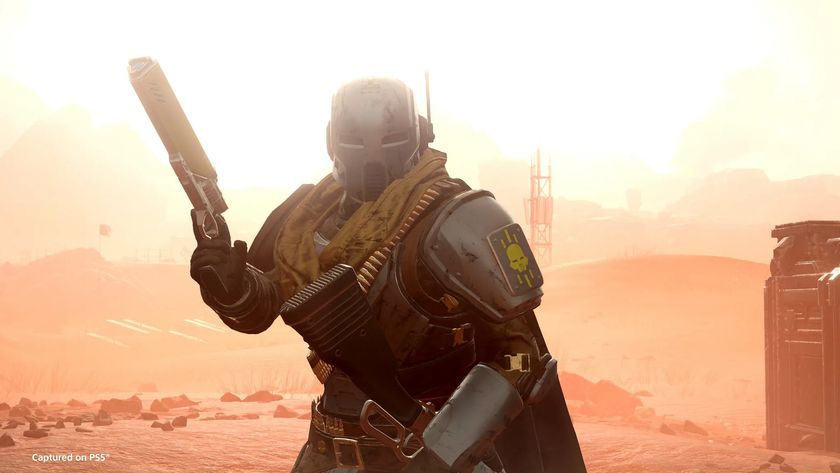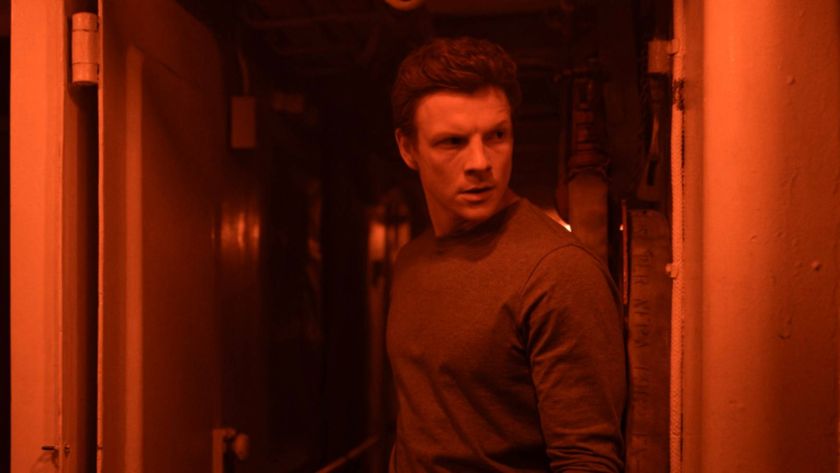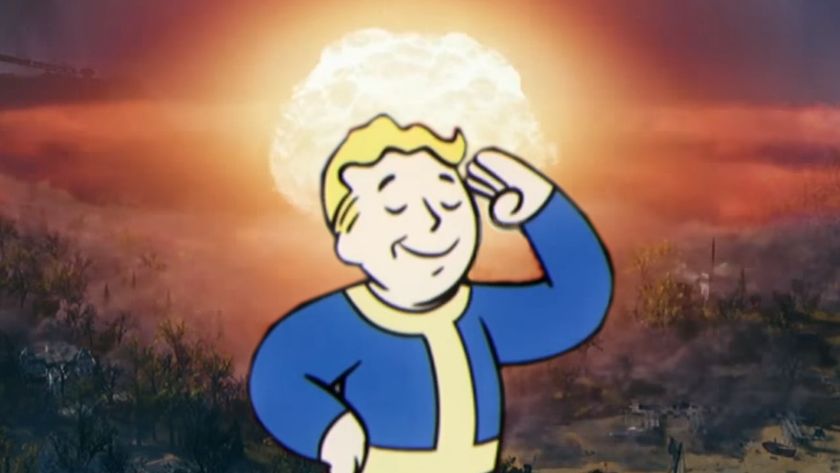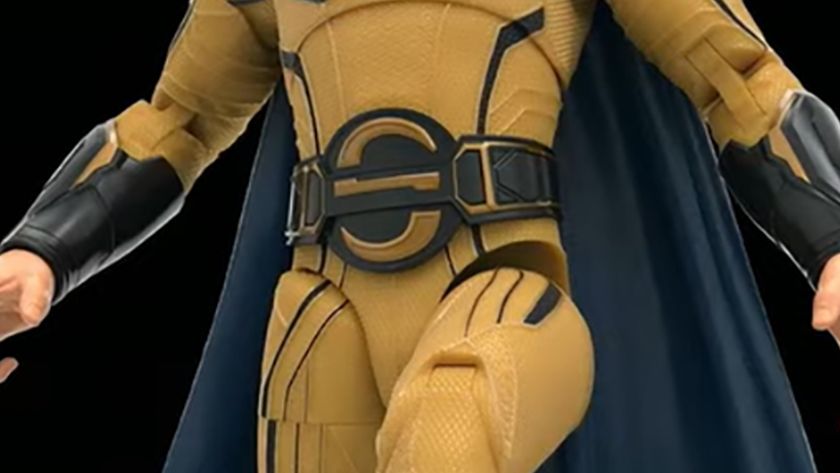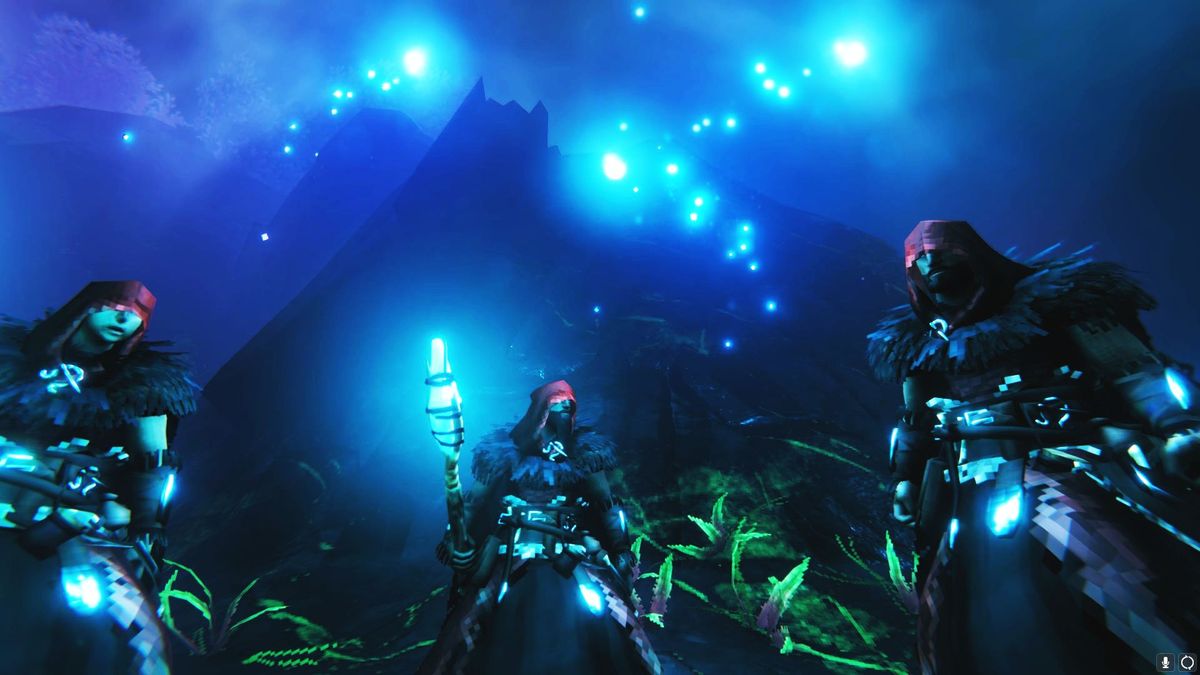
As I follow two of Valheim’s developers through the mists, gliding from rock to rock like a giant flying squirrel, I think to myself that this isn’t what I – nor anyone else – was really expecting from the Valheim Mistlands update. Up until now, the biome has existed in-game as a dark and barren region, one with an alarming number of skulls. Players were expecting the final version of the Mistlands to be a gloomy and oppressive place, essentially a spin on the deeply unwelcoming Swamp biome. But this couldn’t be further from the case.
"It’s beautiful, but it’s also a very deadly place to be," says lead artist Robin Eyre as we leap through the fog. "This was basically our last chance to go in and re-design [a biome], because the Ashlands and the Deep North are pretty straightforward.
"But what could be hiding inside the mist?"
It’s a question Valheim players have been asking for quite some time. Since the game’s early access launch in February 2021, updates such as Hearth and Home have expanded Valheim’s selection of weapons, food and build pieces. But the game has been in desperate need of a new biome. At the centre of Valheim is a boss-to-biome gameplay loop, where conquering one environment gives you the tools for the next. In the absence of further biomes beyond the Plains, players have been left in a sort of narrative limbo.
Thankfully, it all seems to have been worth the wait. The Mistlands is a wonderfully atmospheric area: one filled with magic, mystery and lore. Navigating the fog requires a tinkerbell-style light to clear the way, and even then, it’s easy to be jumpscared by an aggressive insect. In your haste to escape, you might stumble across a glowing Yggdrasil root, or discover the ruins of an ancient civilization. The steep cliff faces make fleeing tricky, but the newly-added feather capes allow you to make a hasty exit without taking fall damage. The mist will sometimes clear to create areas of improved visibility, while climbing high enough will lift you above the clouds to reveal points of interest. It’s an eerie, mystical place – one that rekindles the sense of uncertainty I felt in my first few expeditions in Valheim.
Balancing the force
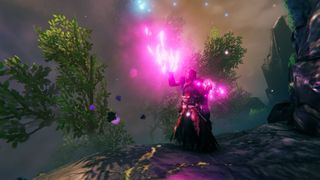
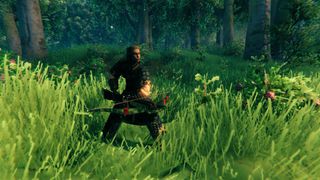
The Valheim Mistlands update, Mountains, roadmap and more explained
As you might expect from a new biome, there are plenty of new enemies, weapons and build pieces. Yet there are also entirely new systems at play here. Most radically of all, magic is now a part of Valheim’s combat. Resources gathered in the Mistlands allow you to craft magic staves themed around fire, ice, protective magic, and raising the dead (you can summon friendly little skeletons and name them things like ‘Skelly’, by the way). This means the introduction of an all-new Valheim Eitr magic bar, meaning you'll need to cook up magical snacks if you want to play as a Viking mage.
According to Eyre, the Iron Gate team had discussed mage combat since before the game’s Early Access release. Yet despite these early plans, the decision to implement magic wasn’t an easy one, with players divided into camps over whether or not magic should be introduced.
Sign up to the 12DOVE Newsletter
Weekly digests, tales from the communities you love, and more
"We actually wanted to implement it in Mountains – because that's where we start to find these magical properties and weapons," Eyre explains. "But it just felt like no, let's wait a little while longer. For us, seeing that this is your character who comes from Midgard to Valheim, and this is your epic journey or legendary saga… we feel like putting magic in is the right thing to do. Because we want to blow it up in scale, and try to get this epic feeling once you start getting to the end biomes."
It’s taken a little balancing work to get the magic right – Eyre says that mages once had way too much stamina and eitr, and could jump around like magical ninjas – but tweaks to food and armour have resolved the issue. During our play session, one of the developers descends through the air while shooting what is essentially an icicle minigun, which is enough to place me firmly in the pro-magic camp. The promise of further magical upgrades and support-based gameplay makes the upcoming biomes seem all the more enticing.
Harsh terrain
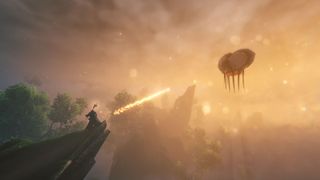
"For us, seeing that this is your character who comes from Midgard to Valheim, and this is your epic journey or legendary saga… we feel like putting magic in is the right thing to do."
For those who remain unconvinced by the magic, there are also some more down-to-earth additions. Along with a two-handed sword, there’s a chunky crossbow called the Arbalest, which packs such a serious punch that both you and your enemies will experience knock-back. The more established weapon types each have their own upgrades, which are much-needed, as the Mistlands brings a considerable hike in difficulty. Even in the middle of our tour, party members are picked off by the large insectoid ‘seeker’ enemies that populate the Mistlands. Expeditions down into the biome’s dungeons, populated by Alien-inspired egg sacks and ticks, demand strong squad communication skills.
Later, we shelter in a large castle structure, surrounded by Dverger NPCs who watch us with suspicion. These are dwarf-like people who now live on the surface, having dug too deep and accidentally unleashed all manner of insects into the world. It’s possible to steal items from the Dverger and battle them, but on this occasion they become our allies, as a giant tick-mother descends from the mist and begins hurling bile bombs. Given the damage these explosions do to the Dverger’s stone structures, I raise the point that – even with the new Valheim Black Marble build pieces – constructing bases in the Mistlands could be a challenge.
"It's definitely going to require a bit of getting used to and maybe some defences," says senior developer Jonathan Smårs. "It also depends on where you build your base, but since the mist only reaches a certain level, I think we'll see a lot of builds that are higher up on mountain tops looking out over the mist."
The defences Smårs refers to include an auto-firing mounted ballista, which can shoot massive black metal bolts at enemies. Handy for taking out tick mothers, and for using up all your black metal from the Plains. Meanwhile, on the ground, you can now place troll traps. These aptly-named devices can be used for taking down enemies, or simply messing with your friends. "We’re thinking that people will do the rug over the open hole trick," Eyre admits.
Valheim isn’t just about gruelling enemy encounters, however, and Mistlands brings several wholesome additions. Homesteaders will be pleased to learn that Valheim chickens can be added to their farms, complete with eggs that must be carefully raised to adulthood. Glowing mushrooms from the Mistlands can be gathered and brought home for planting. Fishing is now a more viable source of food, with improved fish behaviour and fish types specific to each biome. The more stars a fish has, the bigger it will be, and the more food it will drop. Great news for collectors, or anyone feeling particularly peckish.
Changing tack
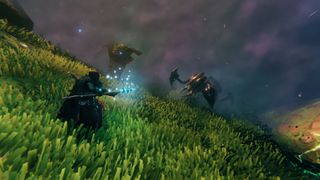
"With everything we do here at Iron Gate, it's an iterative and organic process. We need to try it out and see if it fits the game at all."
There’s a vast amount of new content here, and getting the biome's progression right was a challenge for the Iron Gate team. Eyre explains that Mistlands initially "didn't feel in the correct order," and revisions had to be made to slow progression down to prevent everything from being instantly unlocked.
I was also curious to hear the team's reasoning for prioritising smaller updates, such as Hearth and Home and the mountain caves, over the Mistlands update.
"When we released in early access, everything just exploded," Eyre says. "We saw that we had to go in and start doing bug fixes, because we wanted to present Valheim to as many players as possible, because so many were buying the game. We try to think of it as needing to have really good groundwork laid out first before going forward. So with the bug fixes, and then the food rebalancing in Hearth and Home… we're rebalancing it now so it'll be easier for us to look at the balance later. So for Mistlands, now it's so much easier for us to just balance the food with the new resources."
Perhaps understandably given the wait between early access launch and this first major biome update, some players have expressed concerns about Iron Gate's development timeline. Eyre and Smårs assured me that the next biome will be completed in a shorter timeframe.
"I think that is something that we have learned with making Mistlands, since there are a lot of expectations, and people are getting very antsy about us not releasing it yet" says Smårs. "I think we have learned our lesson on that. We've been working full force on [Mistlands] since March. So almost the first full year after the early access release was not about working on Mistlands, it was working on fixes and then Hearth and Home, and the mountain caves."
"We want to focus on getting the next biome in as soon as possible," Eyre adds. "With everything we do here at Iron Gate, it's an iterative and organic process. We need to try it out and see if it fits the game at all. I know that a lot of people want us to become this big company and just hire lots of people, but it's not what we want to do, we want to work on Valheim at our own pace and try to figure things out. So we can come up with things like what we've done here in Mistlands, and then continue in that manner."
There are two more biomes still to come, and even conversations about what's next for Irongate. But in the meantime, the studio has plenty on its hands with the launch of Mistlands. The new biome should keep players occupied for now, and frankly, it could take me some time just to finish wandering these mists. Where's the exit?
Valheim won't be consigned to PC for long, so here's what we know about Valheim consoles launches.
Emma Kent is a freelance writer and editor, and recipient of the MCV Rising Star award. Emma has written extensively for outlets like Edge magazine and Eurogamer, and is best known for her in-depth reporting on everything from mods to game communities.
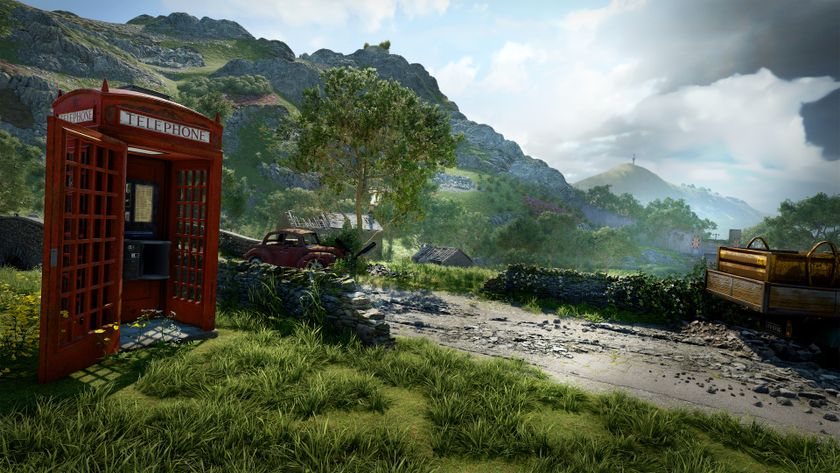
Atomfall officially reaches “extremely British” status as the survival game surpasses 1.5 million players, who’ve collectively sipped 300,000 cups of tea and executed 3.7 million kills with a cricket bat
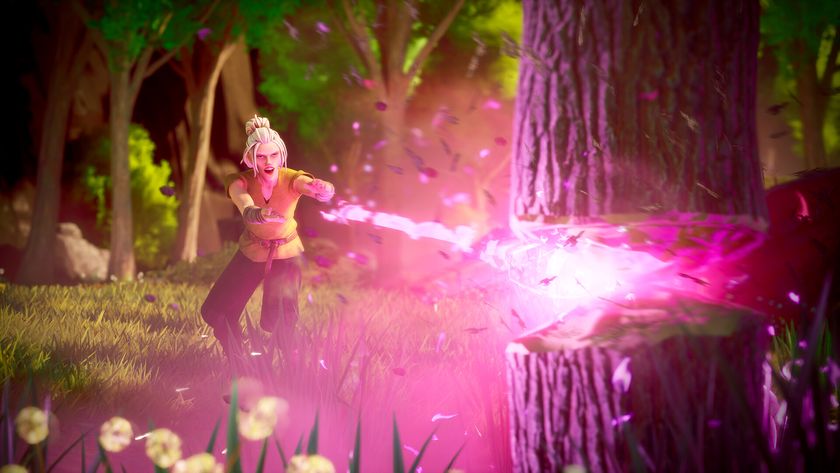
"Is this going to be Valheim with party hats?": RuneScape: Dragonwilds devs know survival games are competitive and focus on "things that make us unique" in a tree-punching genre


